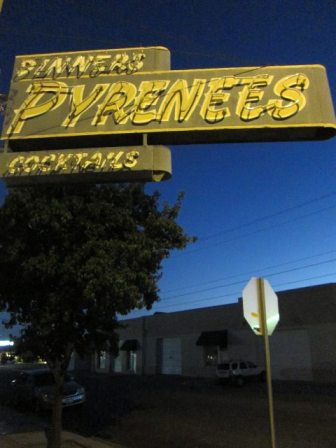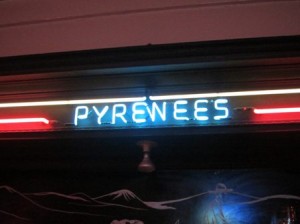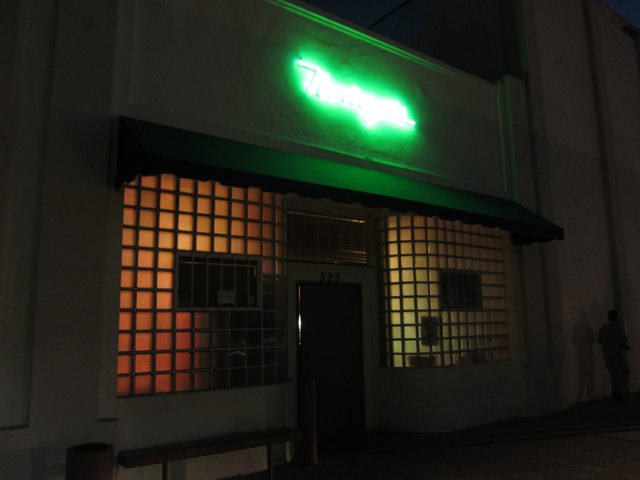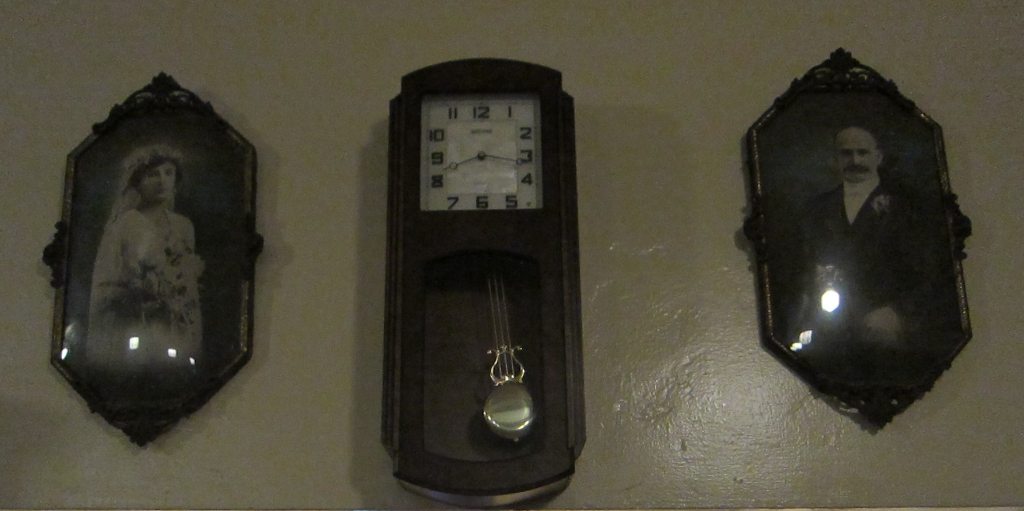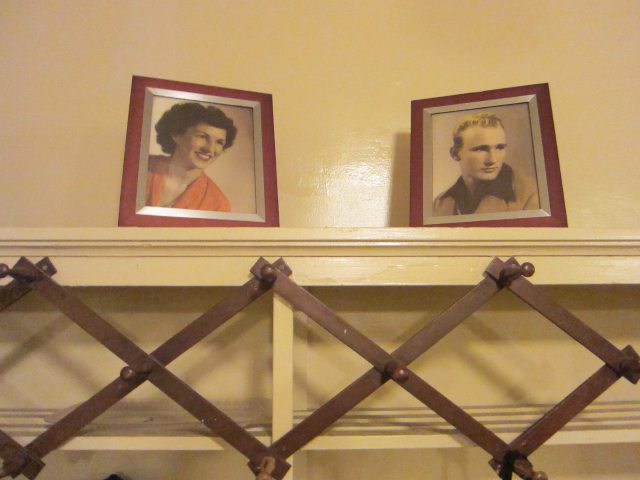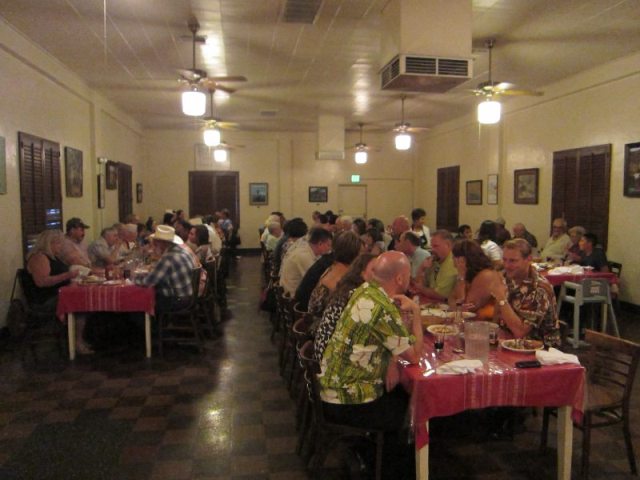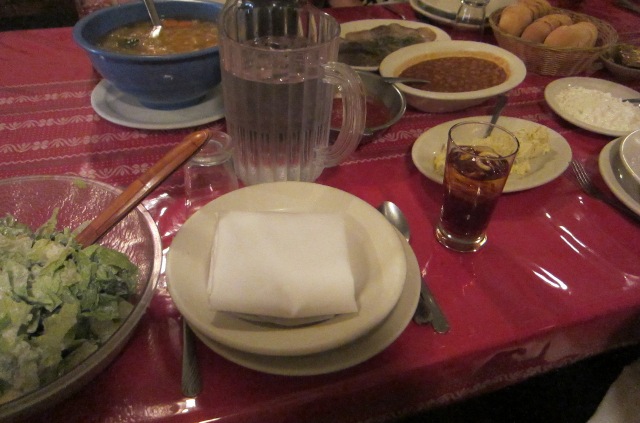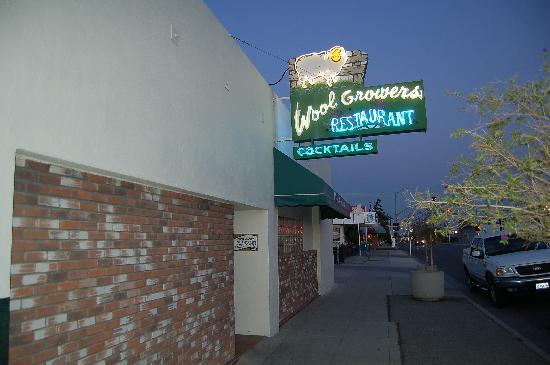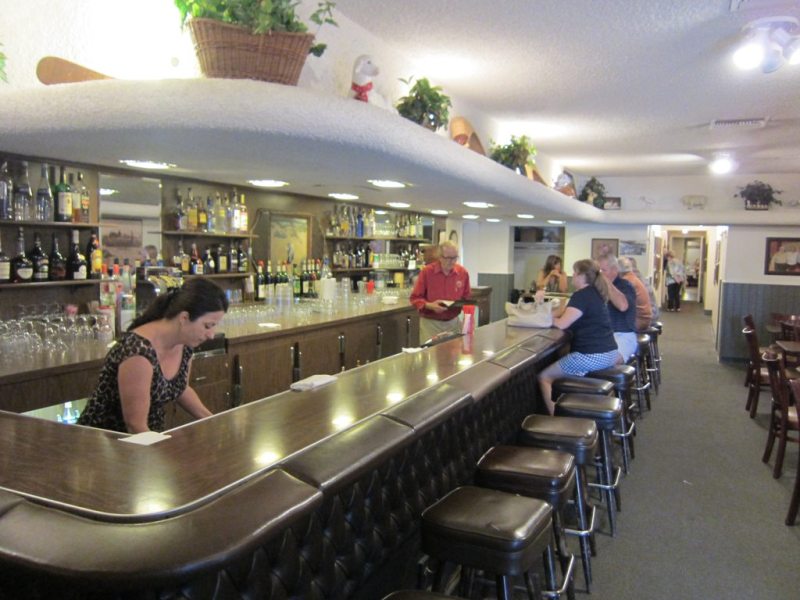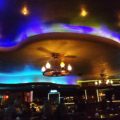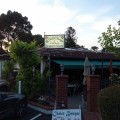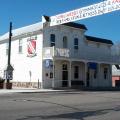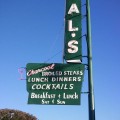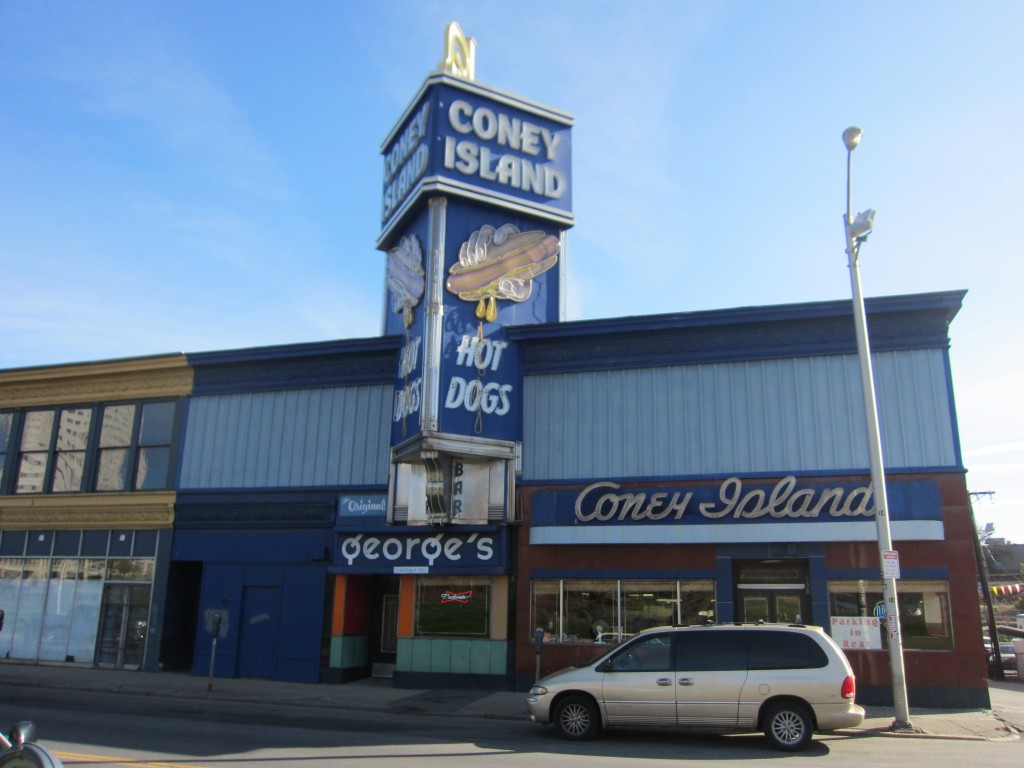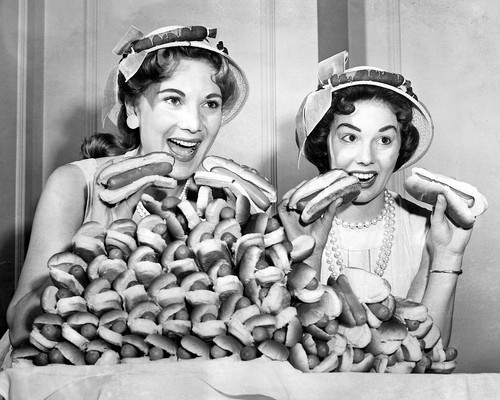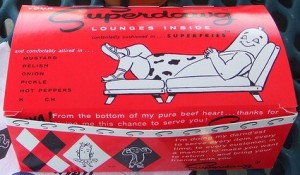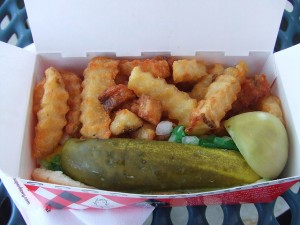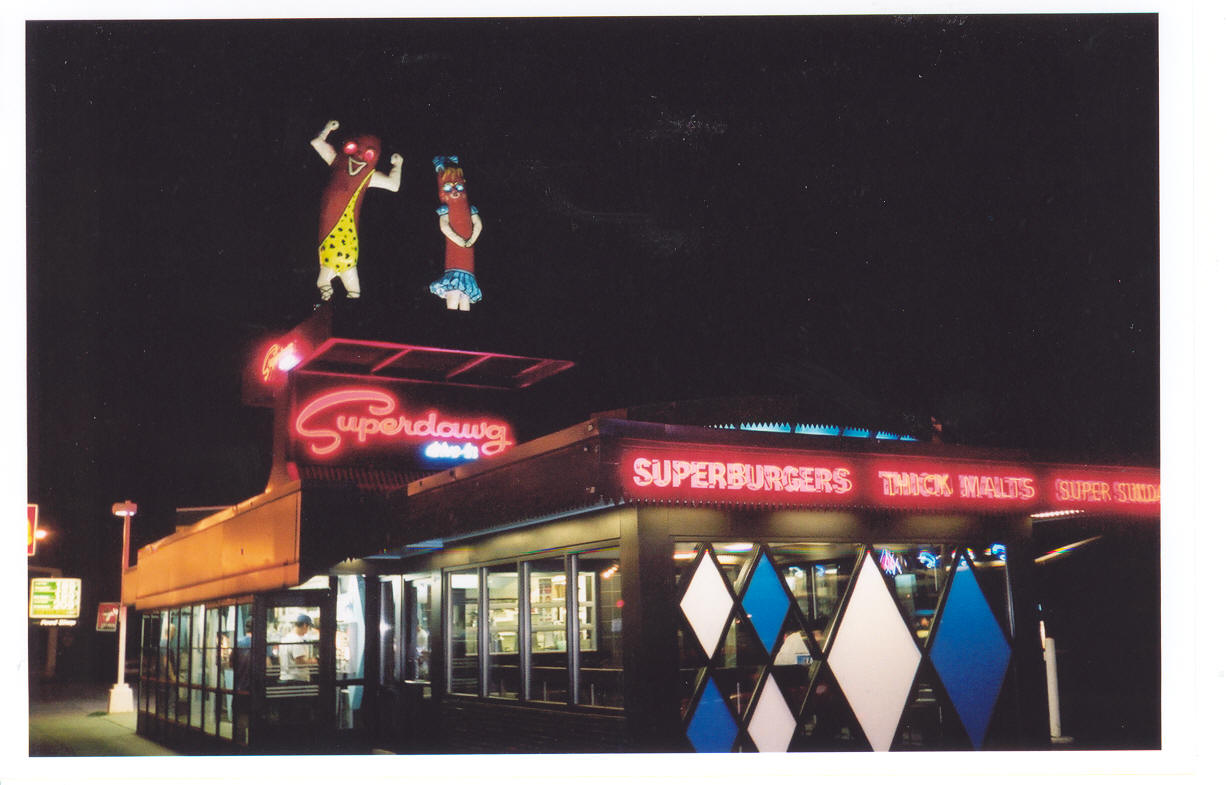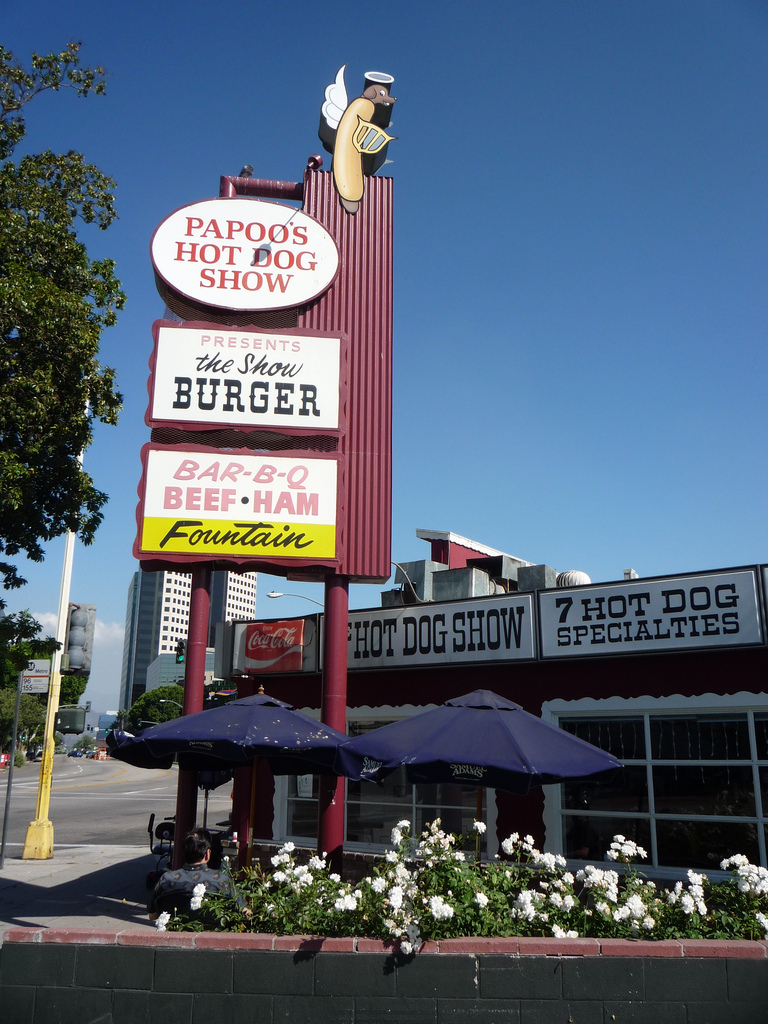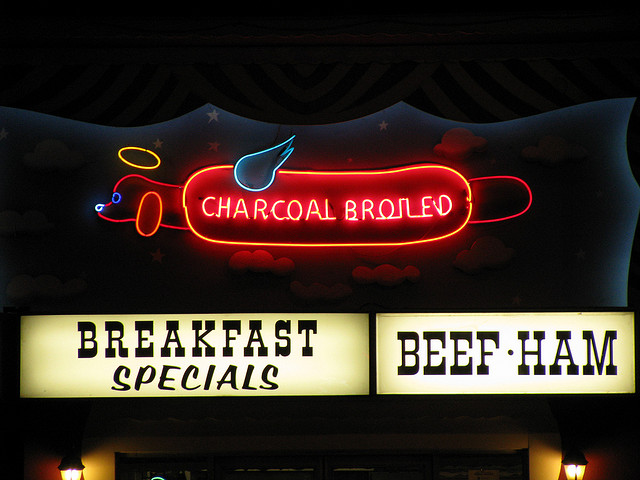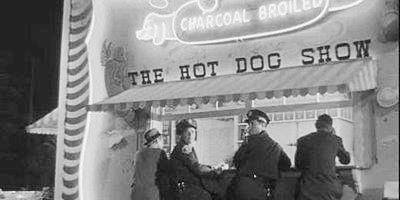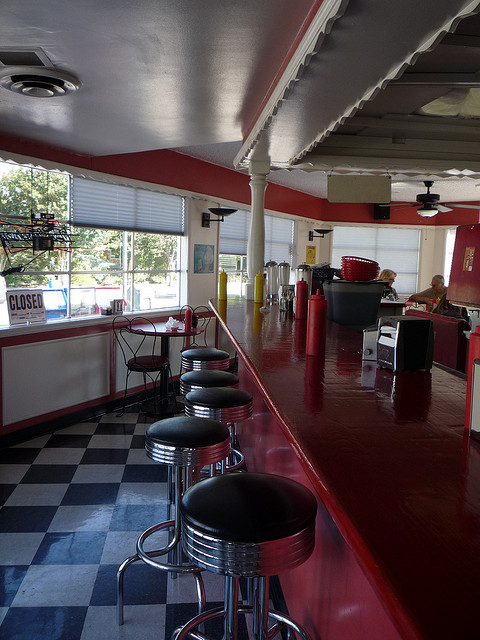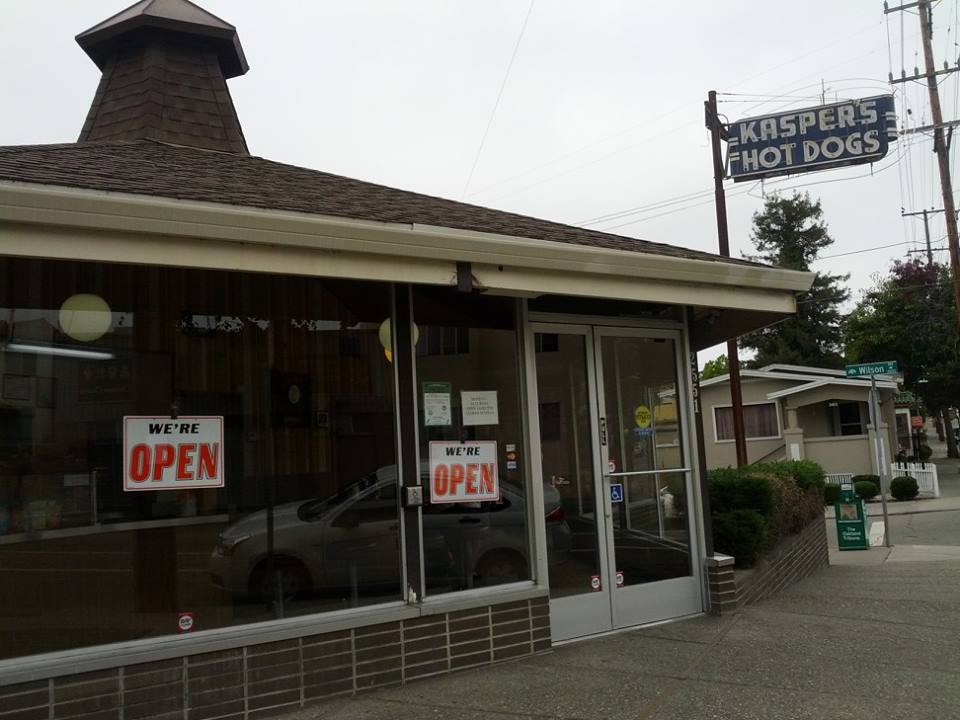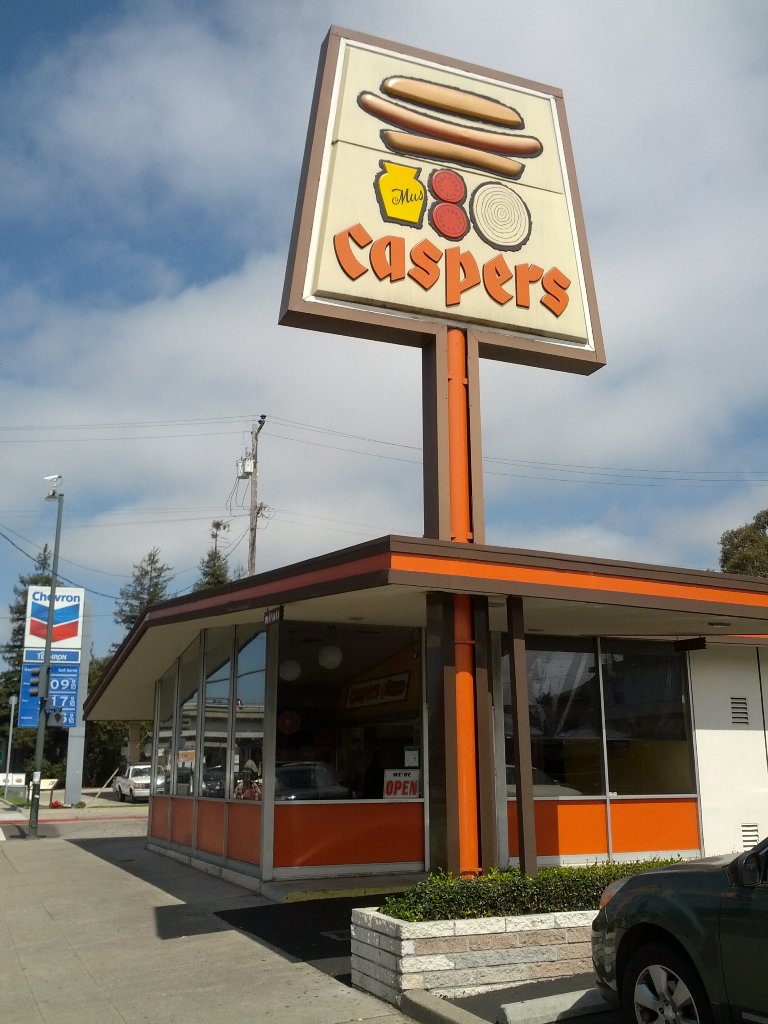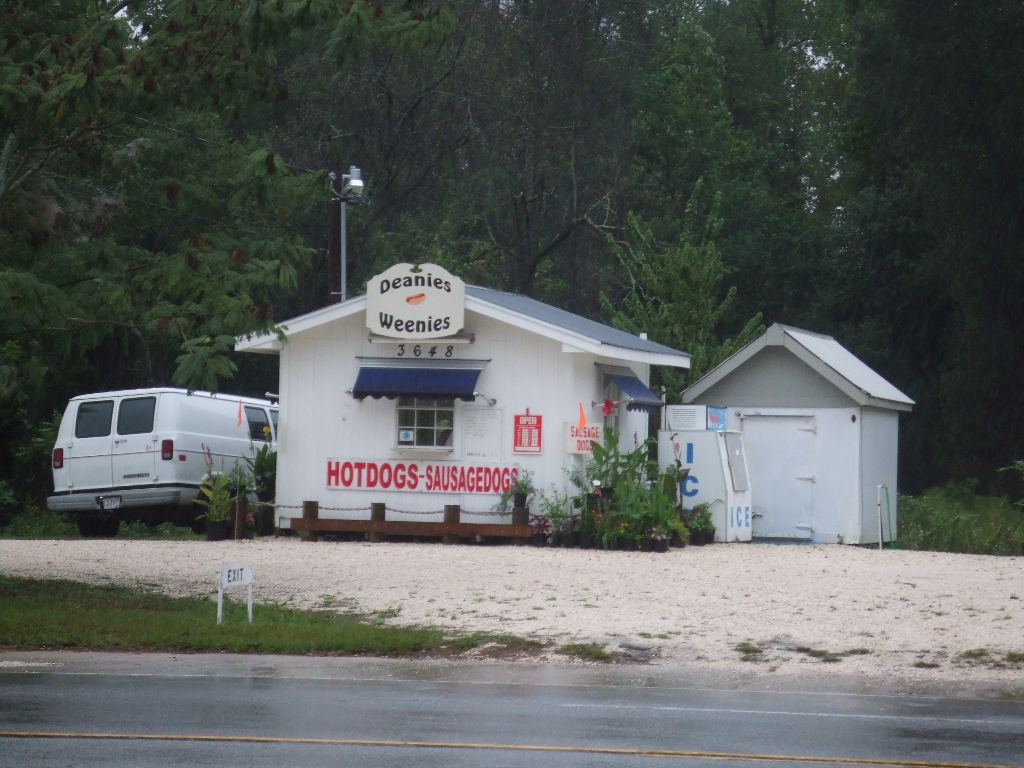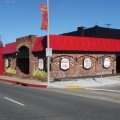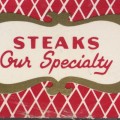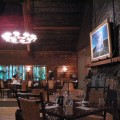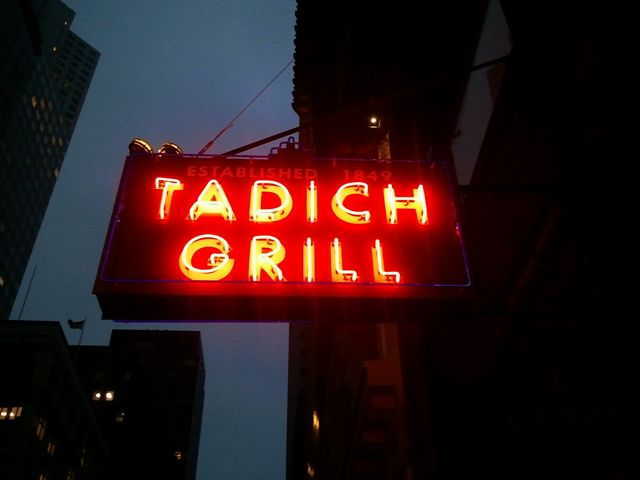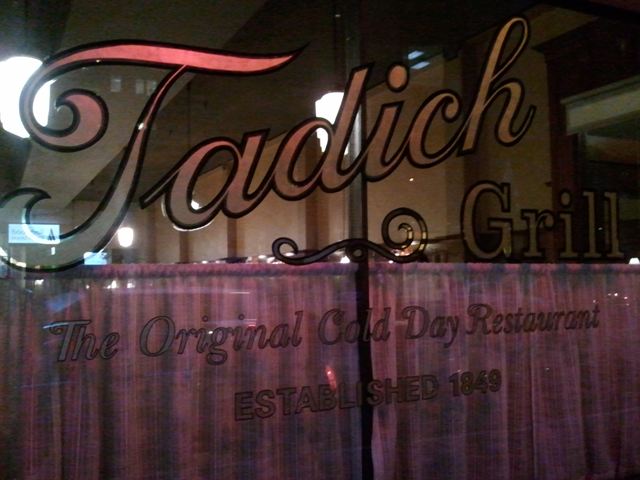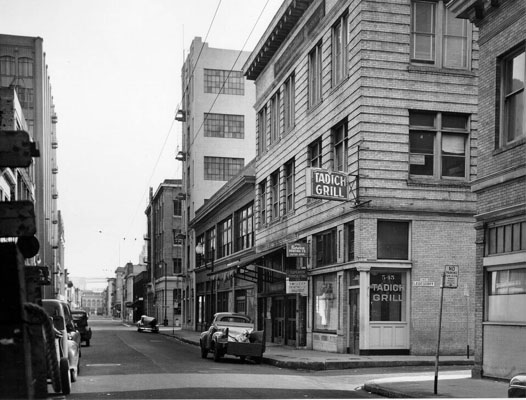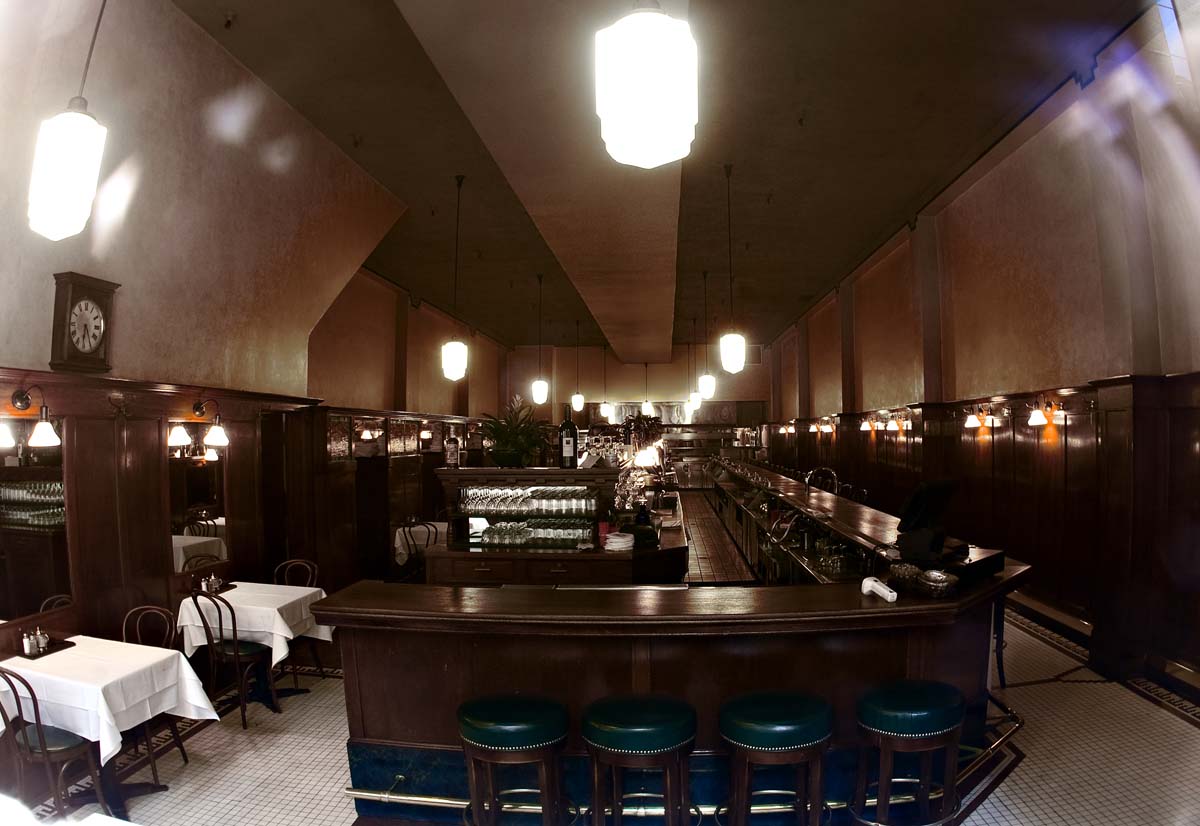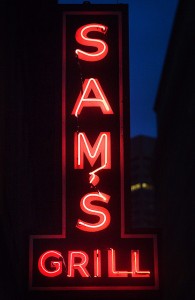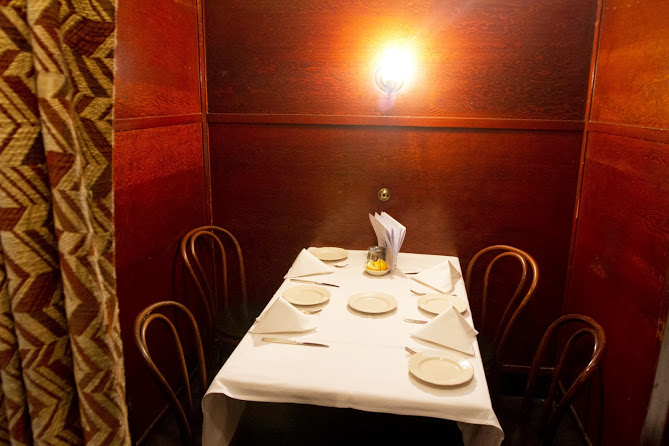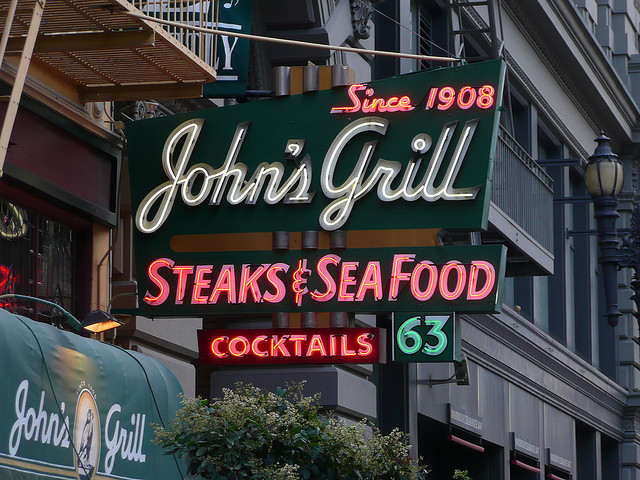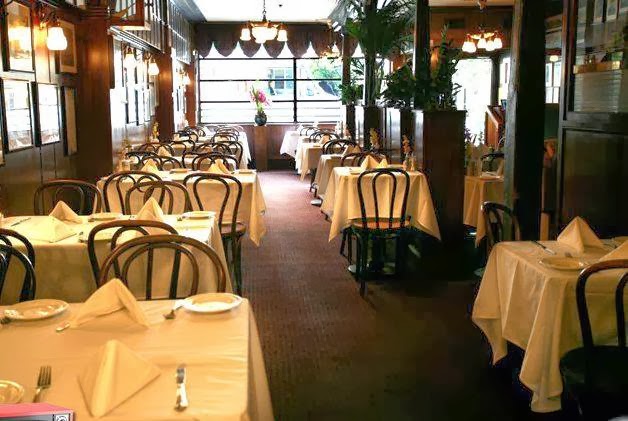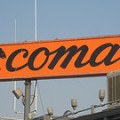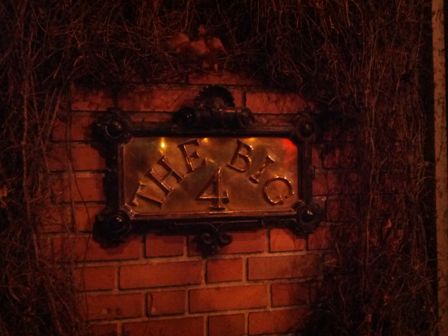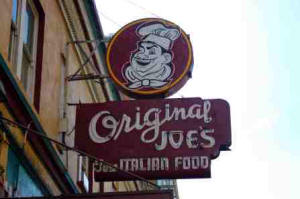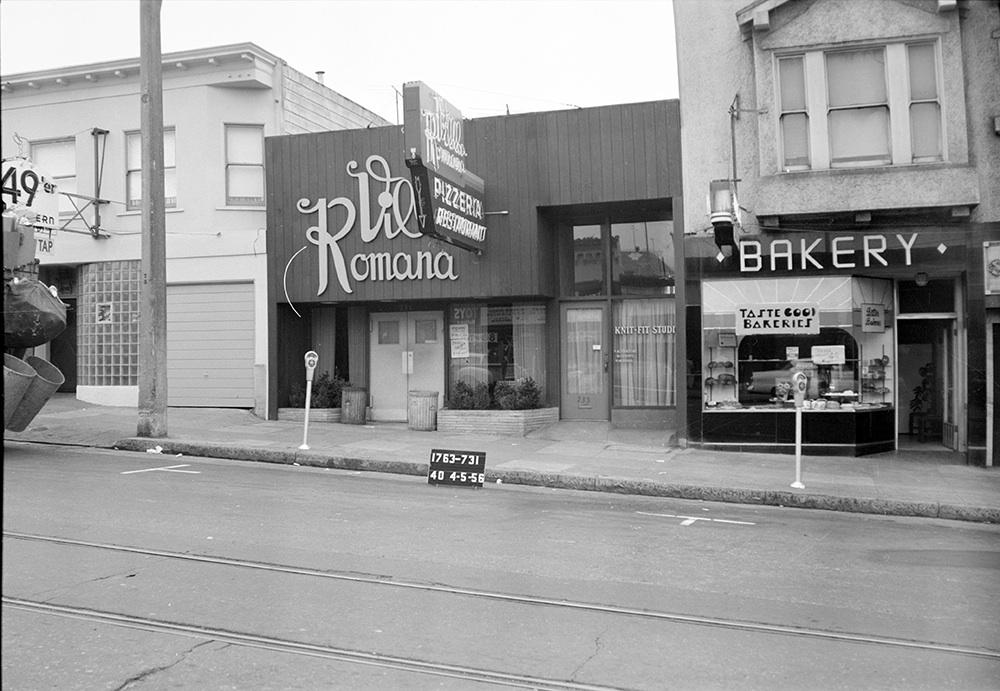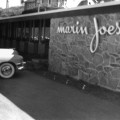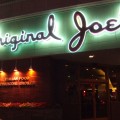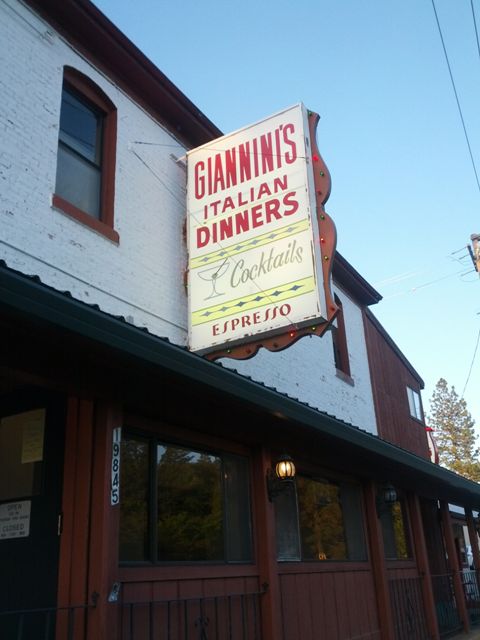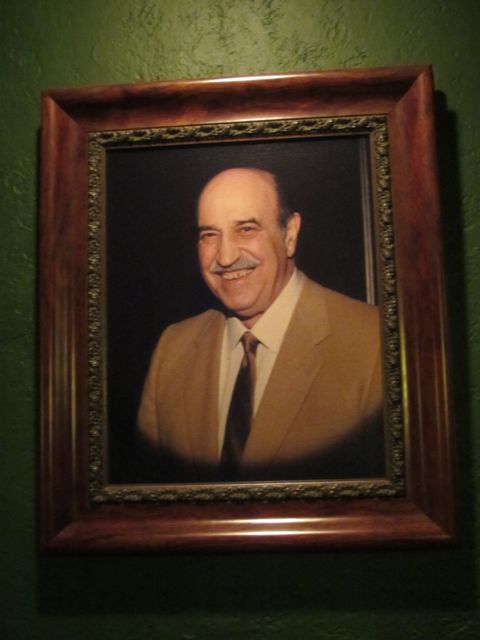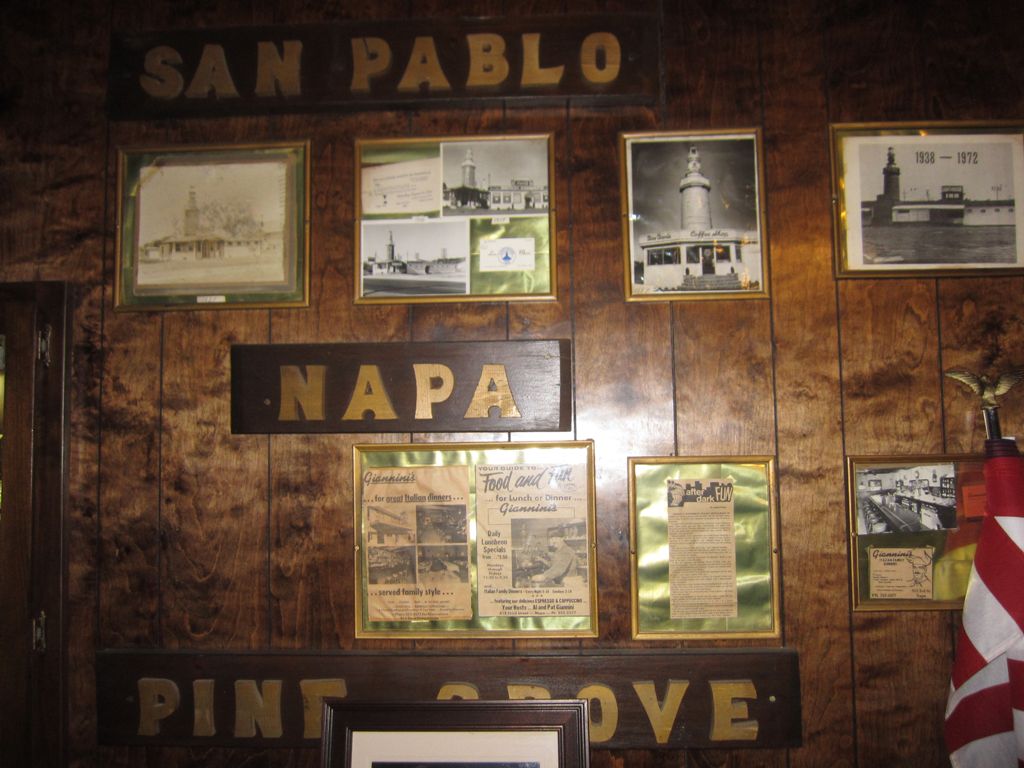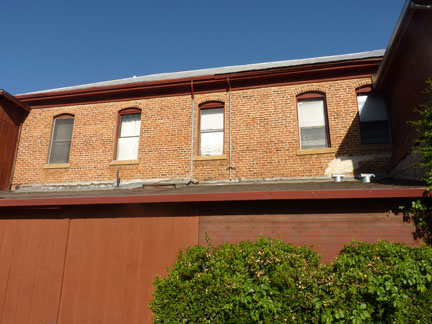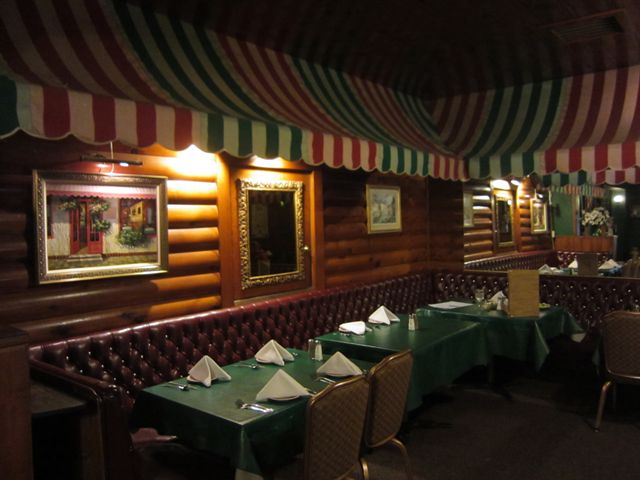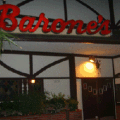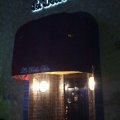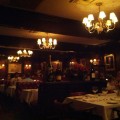Let’s stick with the American Basque restaurant theme after last week’s post on the Overland Hotel in Gardnerville, NV.
Bakersfield, California, is without a doubt the Basque capital of the west, if measured by the number of Basque bars and restaurants. There are three historic Basque hotels with bars and eateries in the old part of east Bakersfield by the railroad tracks (that was originally the town of Sumner, then Kern City, before becoming part of Bakersfield), plus a few Basque restaurants of more recent vintage in other parts of town.
The Pyrenees Cafe opened in 1887 as a hotel, saloon, and bakery. The hotel, which reportedly once housed a brothel, is now apartments, the bakery is still open under separate ownership, while the saloon remains pretty much the same, with the original bar and stools. It is the oldest operating bar in Kern County and it’s claimed to be haunted. If you only have time for one Basque meal in Bakersfield don’t miss the Pyrenees bar for a before dinner Picon Punch.
Noriega’s was opened by Faustino Noriega and Fernando Etcheverry in 1893 as a boardinghouse. It remains a boardinghouse to this day, making it the only remaining original Basque hotel still operating in the U.S.
In 1931, French Basques Juan and Gracianna Elizalde purchased Noriega’s, adding a bar and restaurant in 1940, which have not changed a bit since then (except for a small TV in the bar).
Today Noriega’s is still owned by the same family. It’s run by the Elizaldes granddaughters, Rochelle Ladd and Linda McCoy, who received the James Beard American Classic award for Noriega’s in 2011.
As in most classic American Basque restaurants the food is served family style on long tables. Noriega’s menu includes breakfast, lunch (single seating at 12pm), and dinner (at 7pm), all very hearty meals, with dinner being the largest. The dinner “set-up” (Basque term for the various non-main courses) is generous, including homemade soup, fresh local salad with vinaigrette dressing, their famous pickled tongue, cottage cheese with mayo, pasta or rice, hand cut french fries (usually served with the main course), vegetable, beans, salsa, bread from the Pyrenees bakery nearby, excellent homemade blue cheese, dessert, and ice cream. When I dined there we also received potato salad. House wine, served in unmarked bottles, is included, as well as coffee, tea, or milk. And all that comes with TWO entrees, which vary by the day. Clearly a bargain. The Noriega is famous for their tender oxtail stew, served on Saturdays.
Wool Growers Restaurant was opened in 1954 by J.B. and Mayie Maitia, French Basques, to fill a need in the community for an eatery during the hours when Noriega’s wasn’t serving. It is still owned by Mayie, along with her daughter, Jenny, and granddaughter, Christiane, and this year Mayie and her family are celebrating Wool Growers’ 60 years in business!
The restaurant has tables and booths for four and two, so it’s a good choice if you’re dining alone or prefer more privacy than communal dining provides. The dinner menu has several choices of hearty entrees, unlike many Basque restaurants which have a few entrees that change daily, and includes some French dishes like French Onion soup and escargots. At lunchtime they offer burgers and sandwiches in addition to a large selection of hearty meals. Saveur magazine wrote about the restaurant, praising their oxtail stew.
Although all three restaurants are worth visiting, If I had limited time I would try to eat at Noriega’s and have a Picon Punch in the bars at Pyrenees and Wool Growers. But why not make a weekend of it and eat at all three?
Pyrenees Cafe
601 Sumner St, Bakersfield, CA 93305
(661) 323-0053
Open Mon 10:00am-6:00pm, Tue-Th 10:00am-10:00pm, Fri-Sat 10:00am-12:00am, closed Sunday
Noriega’s
525 Sumner St, Bakersfield, CA 93305
(661) 322-8419
Open for breakfast Tue-Sun 9:00am-11:00am, lunch Tue-Sun 12:00pm (single seating), dinner Tue-Sun 7:00pm (single seating), closed Monday
Wool Growers
620 E 19th St, Bakersfield, CA 93305
(661) 327-9584
Open Mon-Sat 11:30am-2:00pm, 6:00pm-9:30pm, closed Sunday

